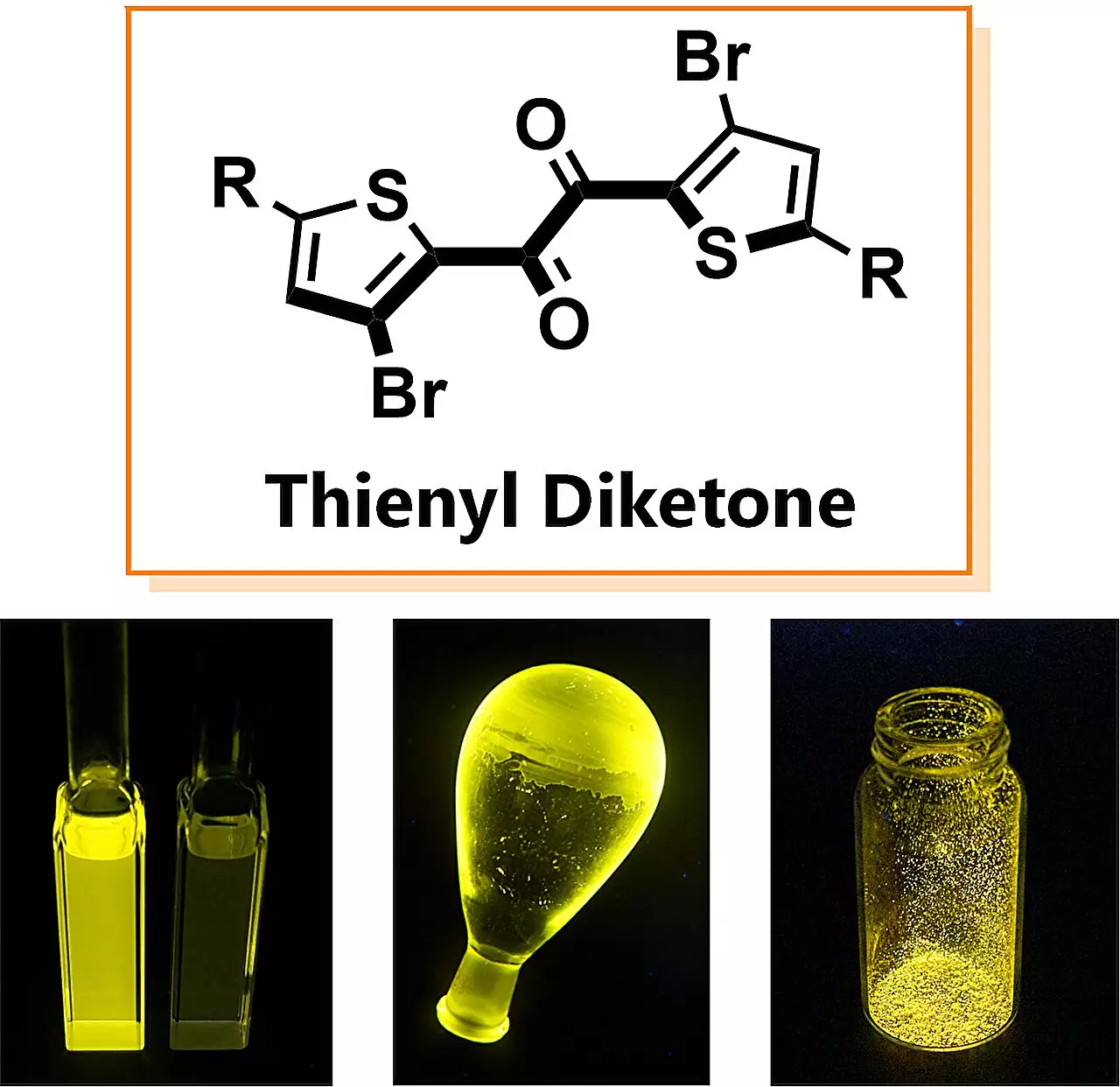In a groundbreaking discovery by a team at Osaka University, researchers have unveiled a new organic molecule called thienyl diketone that sets a precedent in the realm of phosphorescence. This molecule is not just an incremental improvement; it demonstrates a phosphorescent efficiency over ten times quicker than conventional materials traditionally relied upon in the industry. Such a drastic leap in performance warrants deeper analysis, as the implications for technology and science are profound and wide-reaching.
Phosphorescence: Unlocking the Mystery
Phosphorescence, the process that enables a substance to emit light over time after absorbing photons, is critical in various applications, including organic light-emitting displays (OLEDs) and tools for cancer diagnostics. Understanding phosphorescence involves unraveling how molecules transition from excited states to ground states, a journey fraught with competition from non-radiative processes that dissipate energy as heat. This understanding is essential to design more efficient materials, and until now, reliance on rare metals like iridium and platinum has limited innovation because of their high cost and unsustainable nature.
The discovery of thienyl diketone comes as a revelation in this landscape. Historically, attempts to enhance phosphorescent speed through structural modifications in organic compounds yielded negligible results when stacked against rare metal materials. In stark contrast, the research team has achieved a significant breakthrough, shedding light on the mechanisms that bolster the efficiency of thienyl diketone and opening new pathways for innovation.
Chance, Curiosity, and Connection
Senior author of the study, Yosuke Tani, candidly noted that the discovery was serendipitous. What began as an incidental finding quickly evolved into a comprehensive investigation aimed at understanding the underlying principles governing the molecule’s exceptional performance. “We discovered this molecule by chance and initially did not understand why it demonstrated such superior performance,” Tani shares. The ability to bridge the gap between unexpected results and scientific understanding is critical—the hallmark of truly transformative research.
Dr. Tani emphasizes that this endeavor goes beyond mere academic curiosity; it lays a foundation for future inquiries into organic phosphorescent materials. The research pushes boundaries by not only unveiling the potential of thienyl diketone but also providing design guidelines for similar materials that defy the limitations imposed by rare metals.
Implications for Future Technologies
The practical applications of this research are promising and versatile, extending into various sectors, including OLEDs, lighting solutions, and even advanced diagnostic tools in medicine. The effervescence of new organic phosphorescent materials has the potential to disrupt established technologies dominated by rare metal-based alternatives—bringing about an era of more sustainable and accessible options for industries worldwide.
Importantly, while the findings point to a bright future, the team acknowledges that the road ahead is brimming with possibilities yet to be explored. The excitement surrounding thienyl diketone is not only about what it has achieved thus far but also about what it may lead to in the broader context of material science. With the foundation laid by this research, we can only begin to imagine the innovations brewing on the horizon.


Leave a Reply